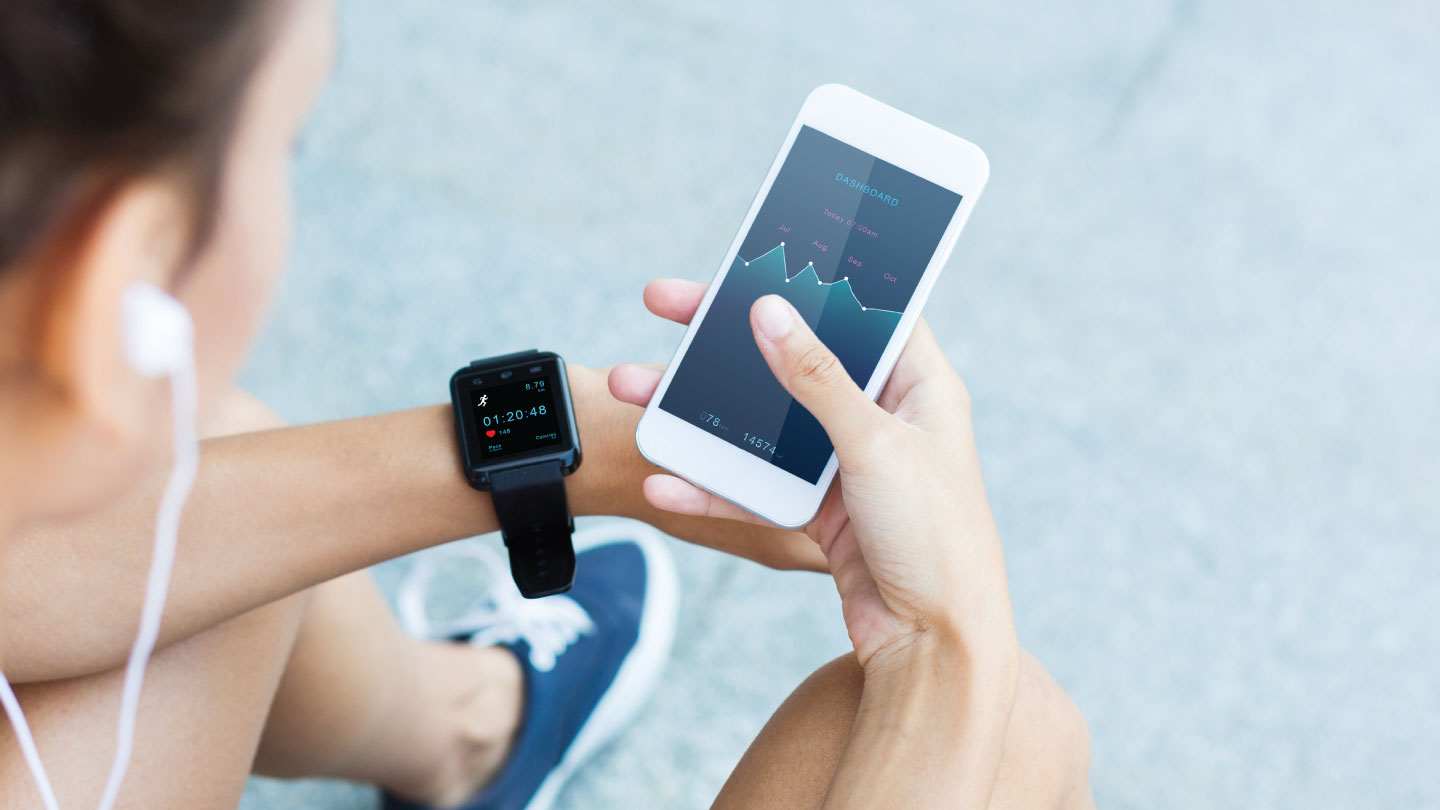Movement
Fat Loss Vs Weight Loss : Which Is Right For You?
While fat loss refers to weight loss from fat, weight loss is a decrease in overall weight that includes loss of muscle, water and fat. There’s more to fat loss vs weight loss. Read on to know what’s right for you.

First things first: whether you do or don't want to lose weight is totally personal; if you want to, great, but if you don't, that is perfectly okay. What you should know is that fat loss is a more specific and healthier goal than weight loss because fat loss is associated with decreased risk of chronic diseases and inflammation. But unfortunately, it can be difficult to know whether you’re losing weight from fat or muscle because most weighing scales do not differentiate fat loss vs weight loss. We spoke to holistic fitness expert Vesna P. Jacob to understand ways to tell if you are losing fat, and how to focus on fat loss.
The Science Of Losing Weight And Losing Fat.
The key to weight loss is to create an energy deficit by burning more calories than you consume. “But weight loss shouldn’t be about deprivation, diets that are unsafe in the long term and deprive you from your favourite foods aren’t the best way to lose fat safely,” says Vesna. “Your approach to weight loss should be one that you can maintain over the long run and importantly, enjoy those diet changes,” she says. For instance the small modifications like cutting down on sugar in your morning cup of tea or coffee, making wise choices to choose snacks helps reduce overall calorie intake. While these changes do not show dramatic results in a short period, these counter your natural tendency to gain weight, Vesna says. She adds that the best way to lose weight is to control your portions, eat mindfully, and give your body enough nutrition to function properly. “Combining mindful eating with exercise like moderate cardio benefits in the long run,” she says. “This is the most sustainable way to lose weight, to increase muscle mass, burn more calories, and not feel constantly hungry.”
Related Story: Mistakes That Are Slowing Your Weight Loss Goal
Fat burning is a different science and needs a different approach. Burning fat is hard because you carry two fat cells in your body, alpha and beta, where each one reacts differently to lipolysis (the breakdown of fats). While alpha cells easily go under the change, beta cells do not respond very favourably–making it difficult to lose fat. Certain areas of our body such as hips, thighs and belly have more beta cells, and others like legs, arms and face have alpha cells. Therefore when you try to lose fat, you first begin to notice changes on places such as legs and arms and conversely find it harder to lose fat in belly and thigh.
Related Story: Healthy Weight loss: Eat This To Burn More Fat
What Is The Difference :Fat Loss Vs Weight Loss
1. Losing kilos or seeing the numbers go down the weighing scale is associated with weight loss. On the other hand, losing inches on the measuring tape is associated with fat loss.
2. Weight loss is when you lose water and muscle content and fat loss is when you lose the stored body fat.
3.Extreme or sudden weight loss can be detrimental to overall health, whereas fat loss can help reduce the risk associated with various chronic diseases such as obesity and CVD.
4. Weight loss can be achieved by excessive exercising, starving, or crash dieting, however, fat loss requires a balanced meal and a healthy amount of exercise.
What Should You Aim For : Weight Loss or Fat Loss
From the perspective of health, fat loss is far better because a higher percentage of visceral fats (fats which wrap around our abdominal organs deep inside our body) leads to higher chances of comorbidities like obesity, diabetes, cardiovascular diseases (CVD), etc. If you only focus on losing weight, you are losing your muscles, which can be detrimental. On the other hand, fat loss helps you retain muscles, which provides strength, agility and burns calories even when you rest. Thus, from the perspective of health, fat loss should be your goal.
Ways to tell you are losing fat
- Check your body proportions: Your clothes will fit better, especially in areas where you typically store fat, such as hips, thighs, or waist. And you'll notice a loss of inches.you can take your measurements once a week to keep track of your progress.
- Go for body composition tests: You can take up a body composition test at a few points during your fitness journey to understand how much fat you’ve lost.
- Own a body fat scale: This tool measures both your body weight and your estimated fat percentage. The tool runs a small current through your toes to calculate the body resistance. Greater body resistance means a higher fat percentage because fat has lesser water and it’s more difficult for a current to travel through it.
- Skinfold caliper method: This requires a caliper. Grab a fold on the skin, and take the measurement of the thickness. It estimates your body fat percentage, but this method takes practice to reach accuracy.
- Try paid or free apps: You have apps or websites, wherein you can put in your data, like weight, height, etc. and it calculates the fat percentage of your body in minutes.
How To Focus On Fat Loss
Diet changes: According to Vesna, if fat loss is your motive, you should aim for a balanced meal, with minimal sugar and processed foods. Opt for a low fat, protein-rich diet along with adequate fibre intake. Also, you need to focus on nutrition and energy to sustain you, because in scarcity mode, the body isn’t certain when you are going to get your next meal and so whatever little you eat, it immediately gets stored.
“So you want your body to be in the space where it knows that the food is coming, there is a good source of energy, good source of clean food, organic food, so that the body can thrive, and work, without going on the saving mode,” says Vesna. “You want the body to keep burning and then as you add exercise to it, it leads to healthy fat loss.”
Try HIIT: You burn fat when your heart rate is 70 - 80 per cent of the maximum heart rate for your age and gender. To determine your maximum heart rate, you should subtract your age from 220. For example, if you are a 30-year-old, your maximum heart rate is 220 minus 30 — or 190 beats per minute. To enter the fat-burning zone, you would want your heart rate to be 70 per cent of 190, which is about 133 beats per minute.
“The intense work periods in a HIIT workout range from 5 seconds to 8 minutes long, and are performed at 80 per cent to 95 per cent of a person’s estimated maximal heart rate,” notes American College of Sports Medicine. When you do HIIT, your body reaches the point called fat-burning heart rate zone – this is when your body begins to burn fat and uses stored fat for energy instead of energy from carbohydrates, resulting in fat loss.
The Bottom Line
What is more challenging is the long term maintenance of the lost fat or weight. “You need to keep up with sustainable, healthy habits to look and feel your best,” says Vesna. That said, you should continue to snack wisely, incorporate weight training, include cardio, get enough sleep, and control your stress levels to maintain your toned body.
With inputs from writers D Tejaswi and Ameya Arora
EXPLORE MORE
Instead of chasing long workouts, micro-movement shifts the focus from “Did I work out today?” to “Did I move often enough today?”
Pressed for time but craving results? These high-impact exercises burn maximum calories in minimum time, when done right.
Simple, practical fitness advice to help you feel stronger, healthier, and more consistent in 2026.
Callisthenics isn’t about flashy Instagram moves or avoiding the gym. According to celebrity fitness and lifestyle coach Krishna Sadvale, it’s one of the most practical ways to build strength, control, and confidence in your own body.






.jpg)

.jpg)
.jpg)
